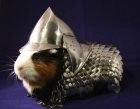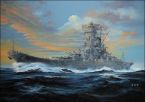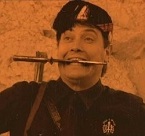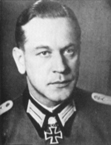GreyJoy
Posts: 6750
Joined: 3/18/2011
Status: offline

|
quote:
ORIGINAL: PaxMondo
GJ,
Not sure what you're looking for here. Nice tests, pretty much as expected IMO. You are largely stopping the raid with 2:1 ... "largely" means a few hits though. It doesn't suggest no damage.
Let's start at the beginning and let's stay focused. If you are looking to get historical results from any model, you need to first input historical data. Your game is NOT historical. Not close. Not by any stretch of the imagination. So to start, you can't expect to anything close to historical results in your testing.
What is not historical?
Let's start with the IJ pilots. The air groups are not the combination of low morale, desperate, burned out, experienced few pilots filled out with 18 yo kamikazes that pretty much defined end of war IJ air groups. Instead you are facing well trained, high morale groups. Ask any pilot how big a deal this is. Huge. And we know in the model this is also huge. LoBaron, Damian, any of the air model experts will confirm this.
Second: air frames. You are not facing the hordes of early war air frames that was historically the case. The A6M2 is not in play, as it actually was. Instead you are facing far better, although still not on par with allied, air frames. Again, huge. Instead of a +100 knot speed advantage, you have on average more like only 50 knots. Still large, but far less than historical. And the bombers instead of being Ronson's now have armor ... again, big change.
Quality: You are facing air craft from well supplied LAND BASES than there is any historical comparative. The closest you have is the Phllipines, but the numbers were still smaller and the supply wasn't as good. Meaning, some not insignificant numbers of the aircraft sortied those days with: not all armaments loaded or functioning, not fully functioning airframes ... This aspect isn't modelled well in the game, but it is a large factor in your comparison to historical results.
Now go look at the actual combat records of the late war great air battles. The allied fighter cover had 2:1 or better advantage in numbers in those fights. If you expectation isn't at least that, it needs to be reset. Now, take that 2:1 and modify it further for the above 3 factors. How high do you need to be? Pure speculation of course, but way above 2:1 is pretty safe.
Now, go back and read up on the planning for the invasion of Japan. The projected losses were horrific. The 1945 analysis was that they could NOT completely defend the fleet against an all out attack, there were going to be substantial losses, and only ONE chance to make a landing. Far higher risk than Normandy. This is what compelled Truman to use the nuke(s). Agree or not with the analyses, but that is what they were.
I'm not suggesting there isn't a problem with very large air combats. Of course there is. My testing last year proved it to me. When I raised the issue, I got no response. So then I did some searching and found out why. There are several threads (search back a couple years ago when they were trying to fix the uber-CAP) with the devs well knowing this issue and working to mitigate it. The thread's don't have all the conclusions as to what was actually done, but pretty clear that it was known and being worked on. JWE has shared his HR's in rader's AAR to further mitigate this, which by now you also have.
So what's the bottom line here? The good news is that as a PBEM player, you actually can install HR's to mitigate this somewhat. It might very well take 4:1 fighter or higher CAP to provide "air tight" results, but you can get there. At 2:1, you get some losses, but knowing this you can mitigate the effects nicely. All of this cuts both ways: it is not one sided at all. IJ faces exactly the same challenges, so this is not a game balance issue.
Me? I'm an AI player, there aren't any HR's, and I haven't quite figured this one out yet. I already know from my Downfall testing the AI is going to send in 100's of B-29's at 6000 ft at night as soon as it has the opportunity. I know, and you do too, that there is no CAP / AA defense against this. They will destroy all industry at the targetted base in 2 - 4 turns and then move onto the next base. My only defense is to never allow that to happen ... ok, a good challenge. 
PS: If you want to do a "historical" test, change the IJ units to A6M2 with Betty's. Set the pilot exp to about 40, morale to about 40, move in a good leader and 2 - 3 high exp pilots into each group and let it go. See your results then. Bet you get quite close to historical results with air combat of less than 200 total a/c (i.e. complete destruction of the IJ units and maybe 2 - 3 kami hits)
Just my thoughts ...
Pax (and you guys all) don't get me wrong. My intent wasn't to recreate historical situations...i started these tests just because there was still something unclear to my eyes about how the CAP works.
So everything started to see the efficiency of large CAP umbrellas. Then i started to try smaller CAPs because people asked me to...and also because i was trying to figure out which would be the best HR to workaround the problem (and no, nobody told me about JWE's suggestions...).
However, i'm far from having understood how CAP really works, however i learnt something from these tests.
Let's try to summerize what i think to have learnt:
1. "fighters being recalled" (so to say "fighters out of position and not able to engage"): What effects this variable is the range of fighters on CAP. 0 range means all the fighters will loither (sp!?) in the given hex. The more you encrease this value (range) the more fighters will get caught while CAPping another hex inside the range-arc set.
2. "scrambing fighters": tests didn't give me a decisive answer but it seems that there's a dice and roll about the chance that those fighters not devoted directly to CAP can scramble. my tests show a % % of 20 out of 100...not that much, so don't rely too much in scrambling fighters. There also seems to be another hard code inner limit concerning the numbers of fighters that can be scrambled...above a certain limit of fighters devoted on CAP it seems that they never scramble (but this may also be connected with the consistency of the incoming strike).
3. "Firing passes limit": we already knew that this limit existed. These tests have only showed me that it is absolutely useless to have more than 300 fighters at 100% CAP on a given hex...above that number the other fighters simply don't engage.
4. "Escort vs. CAP": again we've seen that CAP can be easily overwhelmed. You basically need 4 times the number of engaging fighters to overcome the escort. So, given the 200 (300) firing passes limit, probably any strike with more than 50 escort will enable the bombers to get through without much of a problem.
5. "CAP altitude and efficiency": obviously the closer to the bomber altitude, the better. But there's something more: a GAP in altitude of 9,000 feet between the CAP and the incoming bombers is treated by the code as a HUGE altitude...often enough to let the bombers easily slip below the CAP.
6. "Radar": basically CV/CVLs have radars that gives (at best) you some 35-40 minutes of warning, while surface ships and CVEs give you an avg of 25/28 minutes... often the time needed to get a group to dive from 15k feet to 8k feet (escort altitude) is between 22 and 30 minutes... so be aware that time is not on your side when LRCAPPING amphib TFs....
DISCLAIMER: these tests didn't try to simulate more elaborated strikes (like high altitude mixed with low altitude bombers or heavy escort or light escort and big bomber formations etc etc)...
|
 Printable Version
Printable Version
























 New Messages
New Messages No New Messages
No New Messages Hot Topic w/ New Messages
Hot Topic w/ New Messages Hot Topic w/o New Messages
Hot Topic w/o New Messages Locked w/ New Messages
Locked w/ New Messages Locked w/o New Messages
Locked w/o New Messages Post New Thread
Post New Thread